Create a Tropical Appearing Garden and Still Conserve Water
You can have both a gorgeous tropical garden and save on water. There a certain key things you have to do. And, you need to pick the right plants. This article discusses having a garden that you’ll really like and being prepared for water cutbacks. You don’t have to have a barren, desert landscape with only cactus and succulents. Read below.
Introduction: Water and Greedy Expansive Lawns
As water is one of our most valuable natural resources, it is advisable that avid gardeners take steps to conserve water and avoid wasting it where possible. In Southern California many communities are implementing water restrictions. Because of this, people are looking for things to do to conserve water. Such simple things as repairing leaky facets and sprinklers, setting proper irrigation times, weeding, mulching, and avoiding runoff water are key to a successful water conservation plan.
Most people realize that maintaining a lush, green lawn is quite water demanding. Typically a well maintained green lawn requires more water than most other types of landscape plants. As a reaction to this, some people have cut back watering the lawn and consequently it died. Or, it has taken on that part-dead, brown look. Other people have considered converted their yard to cactus, succulents and other water conserving plants with gravel as a groundcover. But, this results in a very arid and desert appearing landscape. Some people are just stopping water altogether and looking at brown dirt and dead plants. All of these options are far from the “desired” tropical appearing garden. Does one really have to go to such extremes to conserve water? The answer is no. And, this article will explain how one can maintain a tropical appearing garden and yet conserve water.
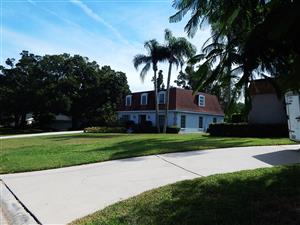

WHAT IS A XEROPHYTIC PLANT?
A definition of “xerophytic” (also spelled “xeriphytic”) might include a statement like “adaptation to living in a dry and arid habitat”. In a domestic situation, this might be misleading, because one can water heavily and live in such a climate More specifically, the term “xerophytic” is often used to describe plants that have modifications in either their conservation and consumption of water or in their ability to collect water from the environment. We have certainly heard of various cactus and succulents that store water for a long dry summer. Other definitions might also include a statement like “a plant that can live on a limited amount of water”. As you study it further and analyze what is really meant, it all has to do with water usage. This is why the term “xerophytic” is used so commonly in the same breath as “water conservation”.
The purpose of this article is to explain to readers that one can conserve water and still create that tropical appearing garden. It’s all a question of which species of plants you select to put into the garden. Your choices are more than a cactus garden or a dry and barren yard.
I am not stating here that a well planned and designed cactus and succulent garden cannot be fantastic. I admire and like many succulent plants. But, to me such selections are typically not lush and tropical appearing. The question is: “Can I have my garden look like the tropics and still conserve water?”
Basics on water conservation
First, let’s discuss general principals about water conservation and the garden. This includes: How much water am I using? Is this the needed amount for my plants? And finally, is any of this water being wasted? Studies have shown that the most common causes of excess water usage are leaky plumbing or fixtures and excessive irrigation. So, one first starts with basic principals and considers such things as leaks, water runoff, over watering, etc.
Fixing leaks is obvious and quite simple. But, determining how much water to deliver is a little more confusing to many. Most people really have no idea how long they should run their sprinklers. At best, their gardener will tell them how to set their timers. Or, they will pick a random number like “fifteen minutes per station”, whether this is the right amount or not. You can easily see how this could lead to excessive over irrigation and wasting of water. The same applies to the frequency of watering. If you use trial and error and experiment with your irrigation, you will find the point of conserving water yet still maintaining the health of your garden.
MORE ABOUT LAWNS
Let’s face the facts: lawns utilize a tremendous amount of water. From a conservation viewpoint, lawns are considered “water hogs”. If you back down on the watering, often the lawn gets brown and looks bad. You can see the problem. The reason for this is that lawns have superficial roots and this superficial soil is most subject to evaporation and loss of water. The only solution is to keep watering and do it all the time. People who have tried to back down on watering the lawn have found an interesting thing occurs. The lawn dies and the trees seem to still look good. Why is this? It’s quite simple. Most trees have deeper roots and there’s more water deeper in the soil. The trees, unlike a lawn, are not dependent on continual superficial watering.
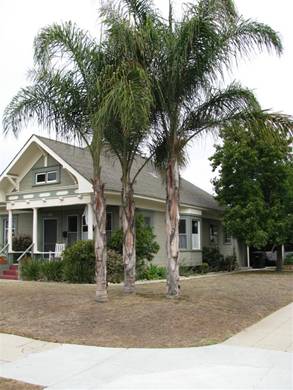
In the picture above, you can see how this homeowner stopped watering his lawn. The lawn has essentially died, but the Queen Palms look great. This photograph makes a point. If you insist on having a big lawn, you are going to use a lot of water. The lawn industry is desperately trying to develop drought tolerant lawns. They understand this problem is threatening the lawn industry. If you’re just beginning your landscape, consider limiting the amount of grass in the design, or even eliminate it altogether. If you have an existing lawn, consider converting part or all of the lawn to other garden themes. And, you’ll have lots of fun doing it and end up with a great looking garden.
WILL CYCADS, PALMS OR OTHER TREES USE MORE WATER?
I think most readers will understand by now that grasses and lawns are high water demanding landscape. But, one might be skeptical about converting to alternative plantings to conserve water. As we have a palm and cycad nursery, we continually hear how customers feel they utilize less water than their neighbors with lawns. This is typically true, but how is this possible? There are several reasons. First, palms and cycads have much deeper roots than grass and can take advantage water that is deep in the soil. Secondly, one is typically watering less surface area when he waters his palms or cycads as compared to a large yard filled with grass. Third, the frequency of watering is typically much less. And finally, one can mulch around the tree or cycad and conserve the water he has given to that particular plant. The latter is not possible with lawns.
The point here is to use your water effectively, water only what needs irrigation, and pick plants that require less water. Even if you don’t have a lawn, the plants you select for the garden can determine how much water your garden will need. Most cycads and many palm trees are drought tolerant. If you take the front yard pictured above with the expansive lawn, if this homeowner eliminated the lawn and selectively added some desirable xerophytic species, he would use less lawn, have a beautiful garden, and eliminate the time and expense of frequent mowing. I realize that there’s something ingrained in many of us, telling us that we “have to have” a big lawn. If you insist upon this, limit the surface area of turf, retaining smaller areas here and there to set off well chosen alternative plants. Even doing this will conserve water.
TROPICAL APPEARING PLANTS THAT DON’T DEMAND MUCH WATER

There are many types of trees and plants that would be considered water conserving or drought tolerant. But, the problem is that many of those available just don’t help create the lush, tropical appearance many are looking for. Almost all cycads and many species of palms have low water needs. And, these plants do create a tropical appearing garden. As you read further, you will find very desirable species that can help you conserve water.
Cycads are Jurassic plants that tend to be small or medium in stature and have had little evolution over millions of years. As a group, they are quite varied in their size, color, characteristics and rates of growth. The most common cycad, the Sago Palm (Cycas revoluta) is lush appearing but can easily go weeks without water in many areas. Other species are equally as frugal with water and many times even better. The picture to the left shows various cycads with low water demands used in the landscape. During most of the year in Southern California, these cycads can be watered as little as once every two weeks and typically get by with nothing but rainwater during the winter. Even during hot months, weekly watering is often adequate. And, they give a lush tropical appearance.
HOW DO CYCADS CONSERVE WATER?
By their nature, most types of cycads prefer good draining soil and do not want to have “wet toes”. They prefer that their soil dries out a bit. In fact, continually damp soil will often result in a cycad’s decline and continual wet soil will result in its death. In their natural habitat, cycads often endure long hot and dry periods. Localities such as arid areas of Mexico, Southern Africa and Australia are homes to many species of cycads. And, these are often areas where there is limited native rainfall. And yet, these species thrive and look great under these conditions.
Cycads natively have characteristics that tend to conserve water. These include a large tuberous root system that holds water. Also, these roots typically go much deeper than one would suspect. Cycads also have protective waxes on the leaf and stem surfaces as well as hairs that prevent transpiration of water, The waxy coat may lead to a blue or blue-green color to the leaves and can also reflect light away from the leaf. Also, the leaflets of cycads are also quite small compared to other types of plants. This leads to less water loss. Also, their basic metabolism and habit of growth conserves water. Only when conditions are advantageous, do cycads produce new leaves. All these factors lead to less water demand by cycads.
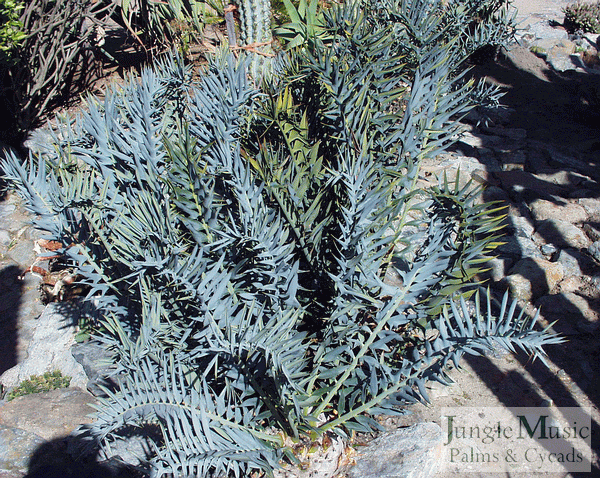
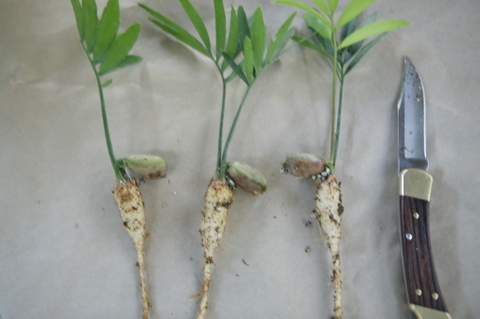

CYCAD DURABILITY AND APPEARANCE
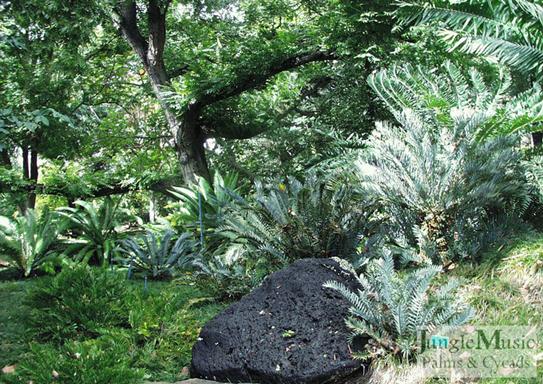
To help you appreciate the durability of cycads, as a group, consider the following points. First, they transplant quite easily. Plants can easily be dug up and moved to a different part of the garden, typically without missing a beat. Secondly, cycads can tolerate rather long periods without watering. Leaving on vacation for a few weeks is typically not a problem for larger plants. In fact, a barerooted cycad trunk can survive for months without water and then reestablish roots after this time, producing a very healthy plant. This historically allowed bare root plants to be shipped worldwide, even by surface transport. Lastly, unseasonably dry periods have little effect on the overall health of the plant.
So, can cycads appear tropical? The question is absolutely yes! Many species hold huge heads of stretching, vibrantly green leaves. With some species, leaves can approach 20 feet in length, almost appearing to be a palm tree. Or, if you prefer smaller, there are species with leaves under two feet. The leaves of cycads are typically quite durable and long-lasting. This means that some plants can carry many sets of leaves year after year giving very full, lush crowns. As many of you know, cycads are Jurassic plants that date back to the age of the dinosaurs. Almost every modern day rendition of dinosaur habitats show lush tropical ground level plants. These includes ferns and cycads. True, there other more desert appearing cycads, but the majority of species have green tropical appearing leaves. And, in most cases, they are just as tropical appearing as palms and tropical trees.
If one carefully picks the right species, a cycad garden can be totally beautiful and exotic and yet only receive deep watering every two weeks. This would include species of Ceratozamia, Cycas, Dioon, Encephalartos and Macrozamia. Many of these tolerate heat, dry conditions and drought. The more tropical Zamia species would not be included in this list, but there are at least fifty species that would serve as drought tolerant cycads. Remember that you must also consider desired sun conditions in selecting the appropriate species for your situation. Some want blazing sun while others prefer filtered light. But, their water requirements are all less than many other plants.
DROUGHT TOLERANT CYCADS
Cycads in general are low water requirement plants. Almost any species you pick will tolerate less watering than most commonly used landscape plants. But, there are some very exotic species that are also known to be even more drought tolerant. The following photographs demonstrate some of these species. It is quite common for cycad gardens to be water only two or three times a month. Cycads are categorized by various genera. The photographs below gives examples of drought tolerant plants from multiple genus. Within each genus, there are many more that would be considered xerophytic.
Ceratozamia
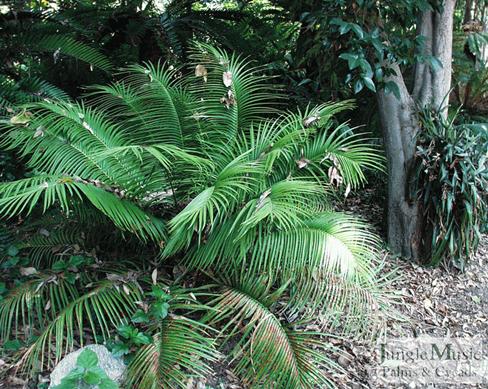
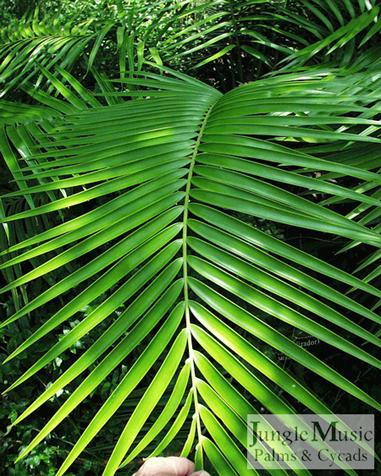
Cycas

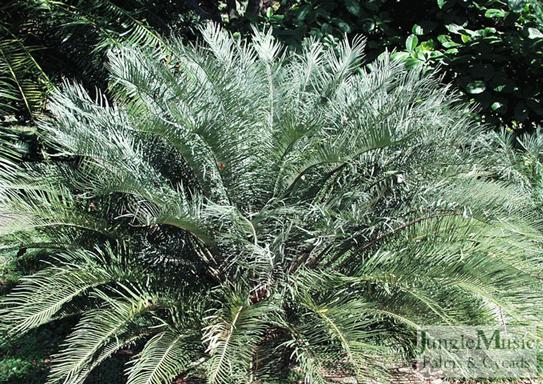
Dioons
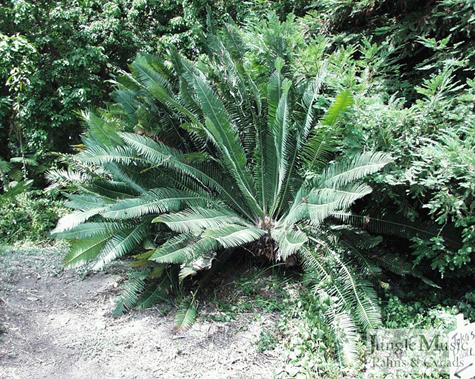
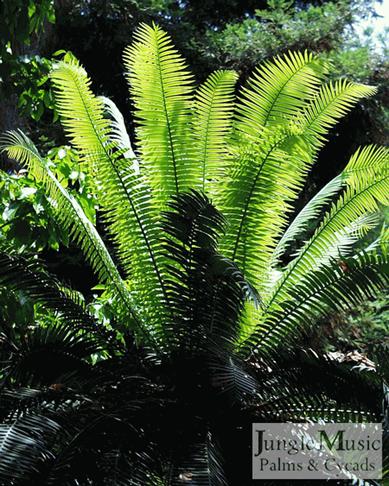
Encephalartos
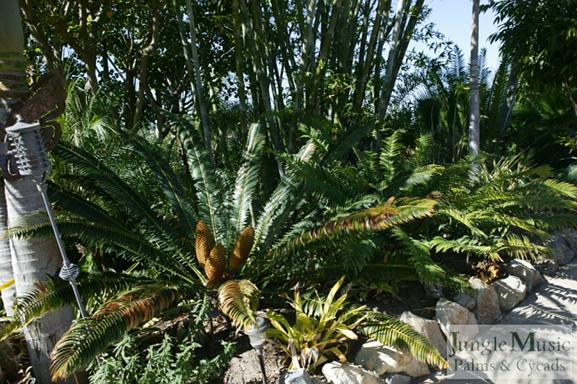
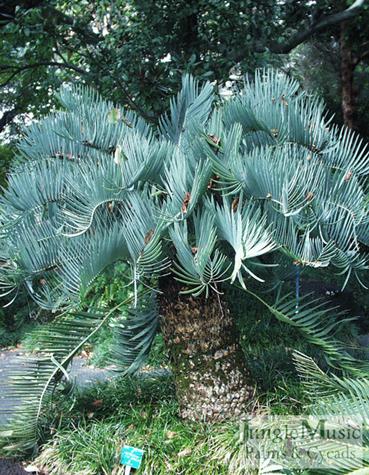
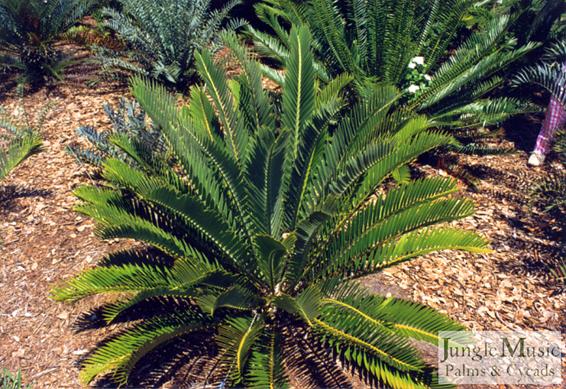
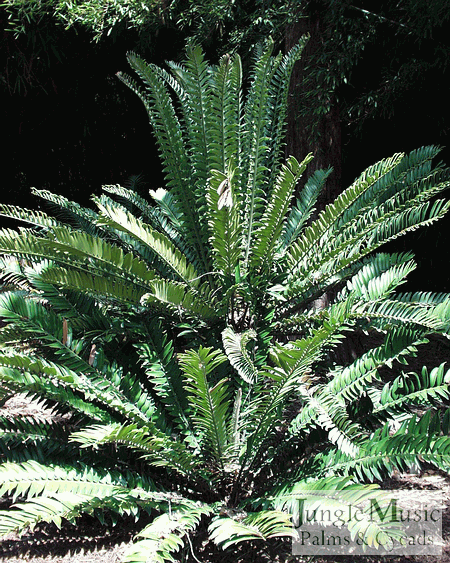
Macrozamia
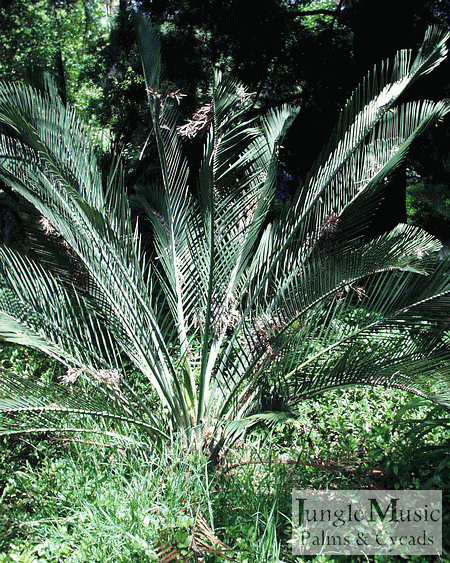
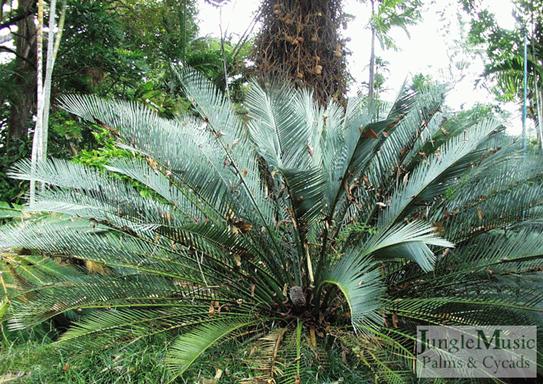
Stangeria


WATER CONSERVING CYCADS IN YOUR GARDEN OR PROJECT
Cycads can be utilized as the only plant material in the garden or mixed in with various other types of plants. The species you select and what you plant them with will determine the overall appearance of your garden. Used solely by themselves, a more arid appearing garden results. But, mixed with the right other plants, cycads help create the most lush garden possible. We are particular fond of mixing cycads with palms, and it’s quite easy to select drought tolerant palms as well. Or, you could mix them with whatever type of plant you like. Cycads form a very beautiful lower to mid-canopy of planting. Most species prefer sun while others will tolerate shade. This varies according to where you live. Cycads tend to be slow growing and are quite rare and many times difficult to find, especially with the more rare species. Below are some pictures of cycads in the landscape. You will note various themes that the gardens are creating just by design and selection of plants. I hope that you enjoy them.
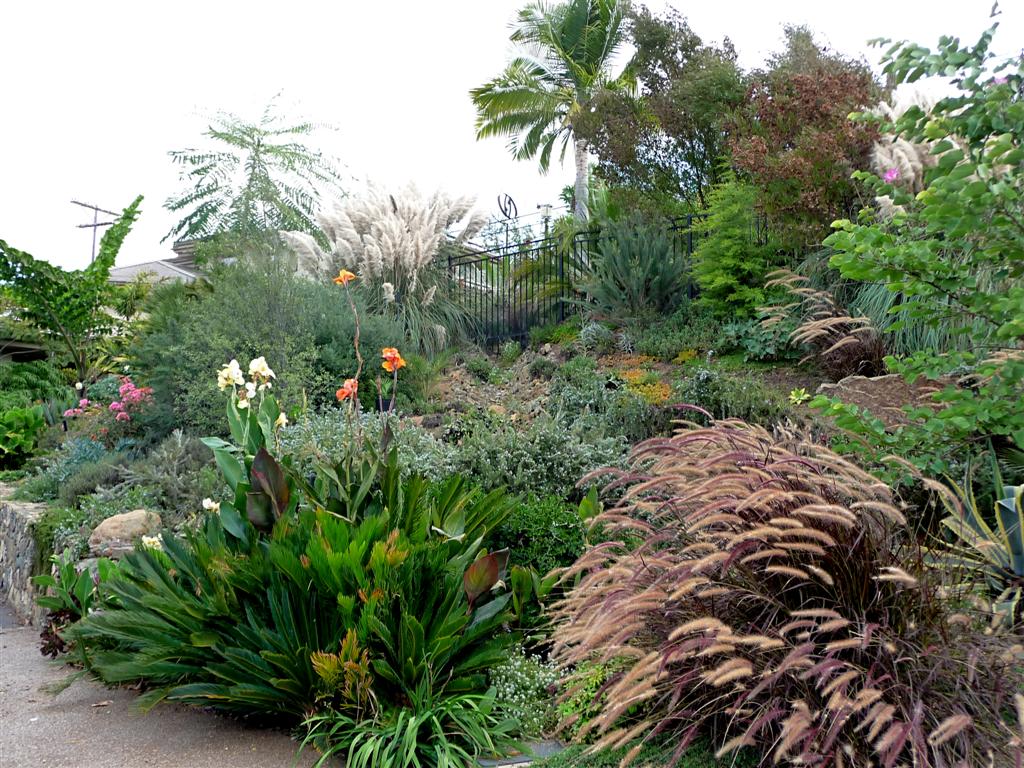
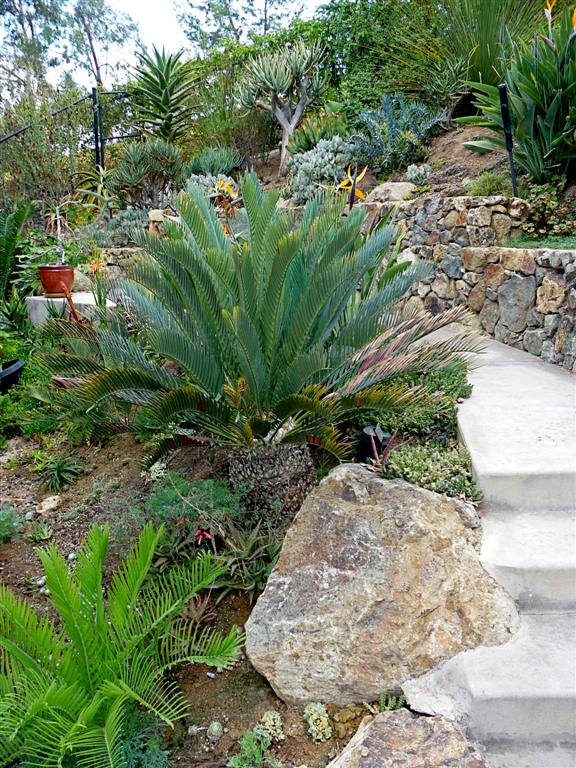

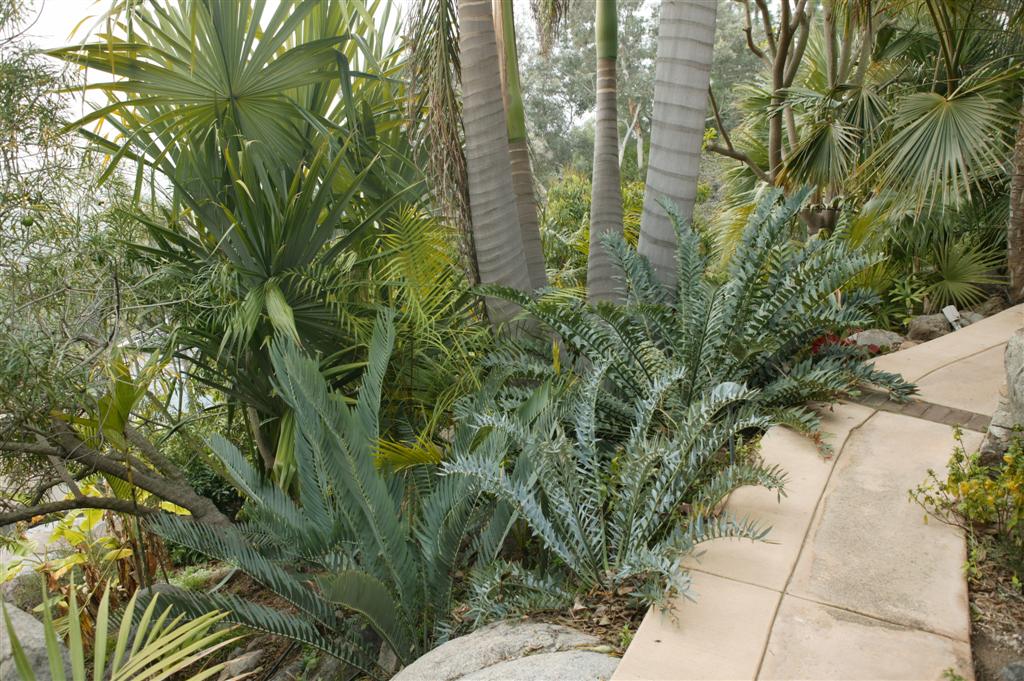
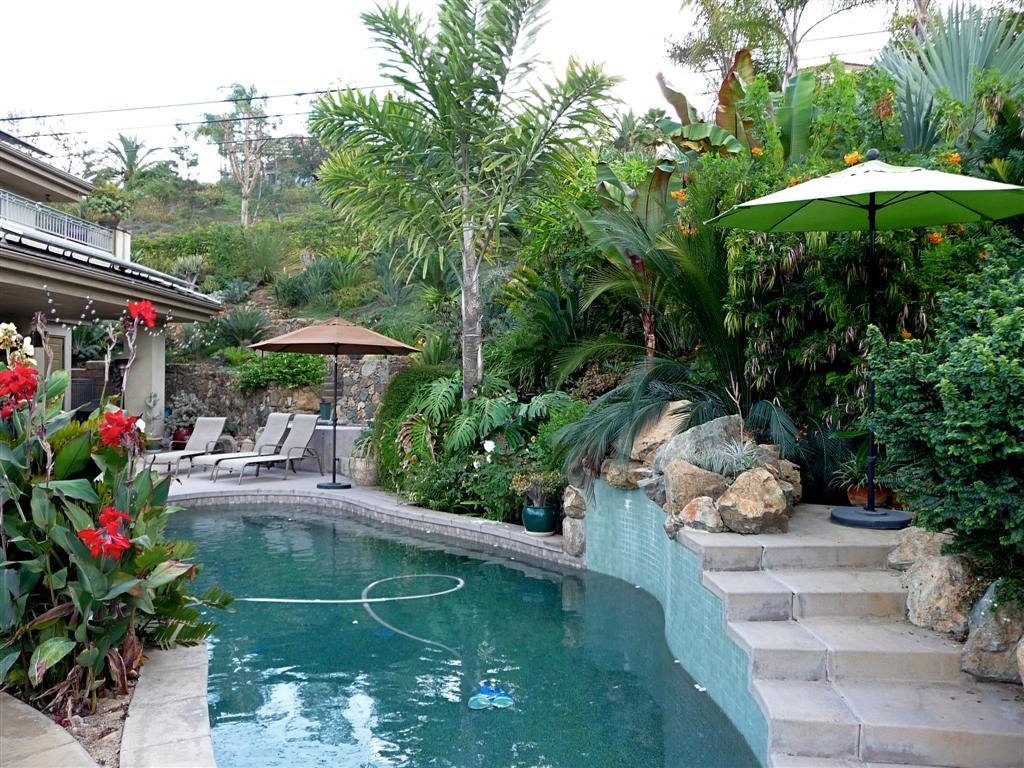
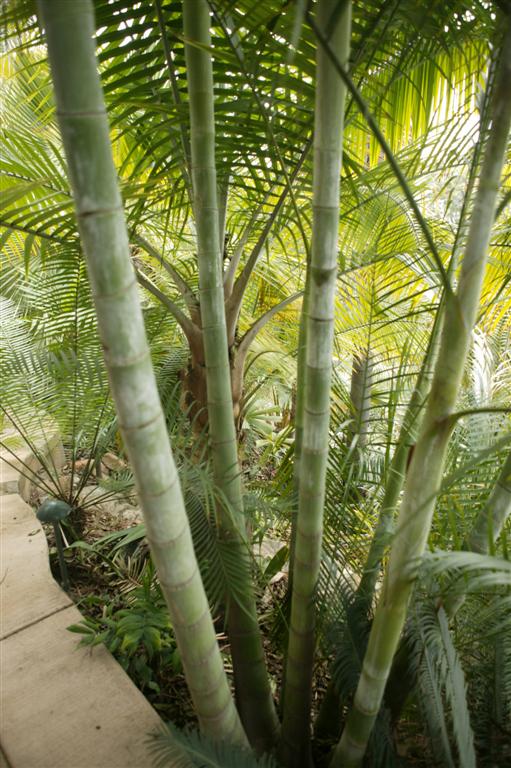
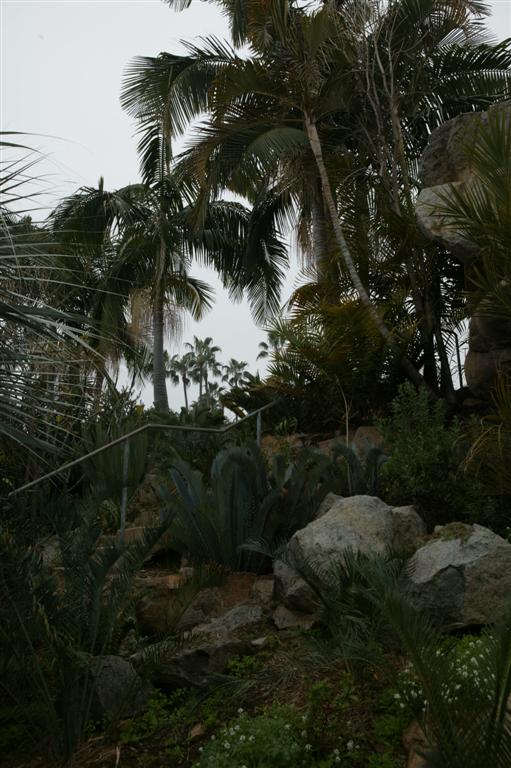
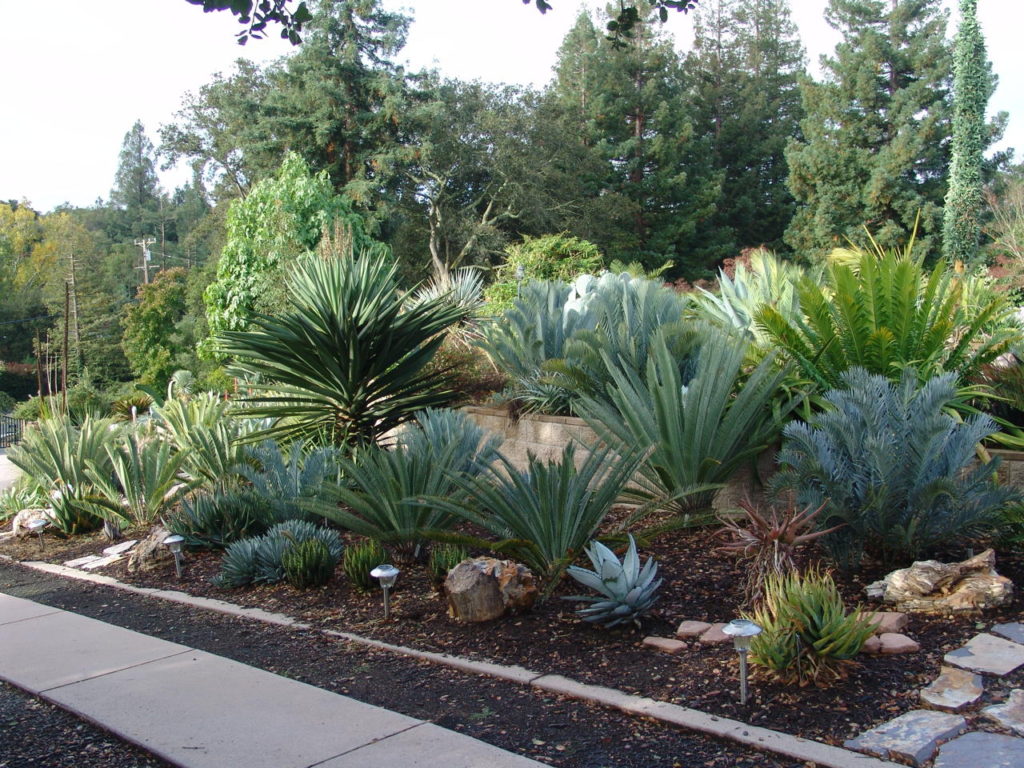
Summary
From all the photographs above, one can see that there are a lot of species of cycads. All conserve water when compared to most other types of plants and many are extremely drought tolerant. Most, in their own right, would be referred to as a “xerophytic plant”. The degree to which you get that lush tropical appearance depends on which species of cycads you select, how you plant them, and what you plant them with. But, remember that the cycads have low water demands and actually do not like to be overwatered. So, you see that there is an alternative to letting everything die with a barren yard. And, you are not sentenced to have a desert appearing cactus garden. Cycads tolerate dry weather, little water, are fairly cold hardy and most like sun. Consider adding them to the garden and getting rid of that water demanding lawn. At our nursery we do have most of the cycads pictured above and can assist you in not only creating a beautiful garden but also in conserving water.
TO SEE ARTICLE ON CONSERVING WATER WITH BOTH PALMS & CYCADS, CLICK HERE
LINK TO MORE ARTICLES ON CYCADS AND THEIR CULTURE: CLICK HERE
Phil Bergman
Owner
- PALM TREES, CYCADS & TROPICAL PLANT BLOG - October 1, 2020
- TRACHYCARPUS
The Windmill Palm - September 30, 2020 - FAN PALMS –
PALMS WITH CIRCULAR LEAVES - September 29, 2020












